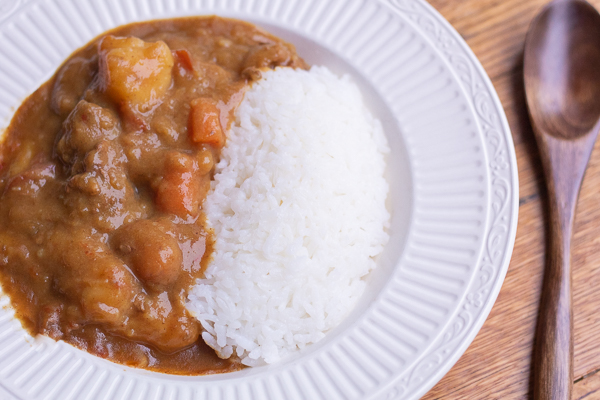
“Curry rice” is one of the most beloved home-cooked meals in Japanese households. It is consumed so much to the point it should be considered one of the unofficial national foods! And just as Japanese food manufacturers have made it easy to make the beloved ramen at home with instant options, making great-tasting homemade style curry rice is just as easy. Here is your quick guide for all the basics of the Japanese curry so that you can make it exactly the way you want it at home as well!
Japanese curry is thicker and milder compared to other curries, like the Indian or Thai variations. It is typically served over sticky or short-grain rice. But another popular way to serve curry is over udon, which is the thick, wheat flour noodle soup.
Curry Roux
The key ingredient and what makes Japanese curry unique is the roux. I suppose you could make the roux from scratch, but this is where you can cut all the extra time and effort by purchasing the boxed curry roux from the Japanese companies. There are a lot of varieties of curry roux, but the majority of them are manufactured by the Japanese food manufacturers S&B and House. To my unrefined palate, they are all good and there aren’t many noticeable differences in the roux, maybe except for the level of the spiciness.
Mild, Medium or Hot Curry Roux Differences
Store-bought curry roux usually comes in three levels of spiciness; mild, medium or hot. Mild has absolutely no heat at all, almost on the sweet side. But Medium is barely spicy. With the Hot option, you do start to notice some heat. There is now the Extra Hot option available but it’s nowhere near spicy as what you might expect from an Indian curry. So, if you love the most extreme spiciness, you will need to add extra red peppers flakes or chili peppers to the Hot or Extra Hot roux as you cook to achieve the level of heat you want.
Traditional ingredients
The most traditional ingredients to put in the curry are:
- Beef (I use the stew meat)
- Potatoes
- Carrots
- Onions
Additional ingredients
You can further customize the curry the way you want by adding some of these other ingredients based on your preference:
- Diced tomatoes
- Mushrooms
- Bell peppers
- Cashews
- Raisins
Meat options
If you are not a beef fan, you can also make the curry using other meats, cut into bite size pieces. Follow my Instant Pot recipe below to get the best result for curry cooked with meat. You can also skip the meat, of course, and the curry tastes just as good!
- Chicken
- Pork
- Seafood – shrimp, squid, mussels, etc. (Note: If you decide to follow my Instant Pot recipe below, I suggest cooking the seafood separately and mixing it to the cooked curry.)
Optional ingredients to enhance the flavor
I have heard that people add some of the following ingredients at the same time as the roux to further enhance the flavor to their liking. I don’t suggest adding ALL of the items below at once, but you can experiment with the following (about 1 tablespoon of each) to see if any of the ingredients below can help achieve the optimum flavor that you and your family might like even more:
- ketchup
- Worcester sauce
- soy sauce
- curry powder
- dark chocolate (approx. 1 inch /1.5 cm square)
- apricot jam
- grape jam
- honey
- apple – grated or sliced
- red pepper flakes or chili powder – to taste
- milk or coconut milk – for creamier texture
- top it with a pat of butter before serving
Pro tip: Make the curry one day in advance and refrigerate. The flavors blend into the meat and vegetables overnight and the curry tastes better on the second or even the third day! If you keep it too much longer though, the curry will start to separate and look kinda gnarly.
Top it with:
If you cooked a lot of things into the curry, you may not want or need to top the curry before serving it over rice or udon. But some of the options I have seen are:
- Fried eggs
- Grated or shredded cheese
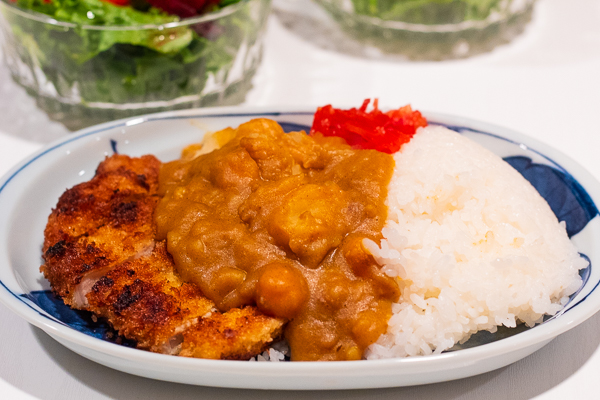
What is the red relish served with Japanese curry rice?
If you have ever had the Japanese curry rice at a restaurant or in Japan, the most traditional relish that accompanies the dish is the bright red and crunchy fukujinzuke. Fukujinzuke is pickled, finely chopped vegetables usually consisting of daikon, cucumbers, eggplants and lotus root.
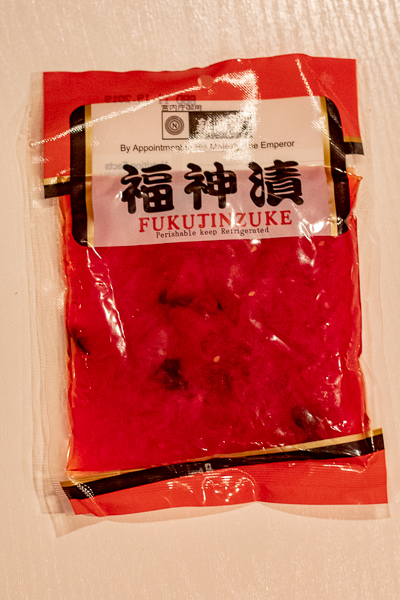
HOW TO MAKE JAPANESE CURRY:
There are two basic ways to make the curry:
- Traditional way, following the directions on the package
- Instant Pot method
Since you can just follow the directions on the package to cook it in the traditional way, I’ve provided the recipes below to make the curry using the Instant Pot. Over the years, I’ve made the curry using the traditional method. But Instant Pot has been a game changer! Just as the pot roast comes out so much faster and tender using Instant Pot, the curry can be perfectly cooked with tender meat using Instant Pot!
How to make Japanese curry with Instant Pot
Instructions: To make 1 whole package of curry sauce mix (12 servings)
- Dice all the ingredients into larger bite-sized pieces.
- Select Sauté function on the Instant Pot and allow to heat up.
- Melt 1 tablespoon of butter or heat 1 tablespoon of vegetable oil. Add the meat and stir until browned on all sides.
- Add the vegetables and any other optional ingredients from above. If you are adding milk or cashews, add them later, at the same time as the roux.
- Add water but reduce the amount by 1 cup to make the whole package or by ½ cup to make half the package. For example, if the package direction calls for 6 cups of water, add 5 cups instead.
- Close and lock the lid. Select Manual mode and set the timer for 30 minutes.
- Release pressure using the natural-release method for 10 minutes. Unlock and remove the lid.
- Break up roux into cubes and gently mix into the soup. It will thicken into consistency that’s similar to beef stew.
- Keep it on the Low mode, close the lid and let it sit for another 10 minutes. Adjust the thickness if needed by gradually adding water but remember that it’s suppose to be thicker than the Indian or Thai curry.
How to serve curry:
Once the curry is cooked, you can serve it the following ways:
- Curry rice – serve over rice
- Curry udon – serve over udon noodle soup. Find the curry udon recipe here!
- Katsu curry – serve over chicken or port cutlet and rice
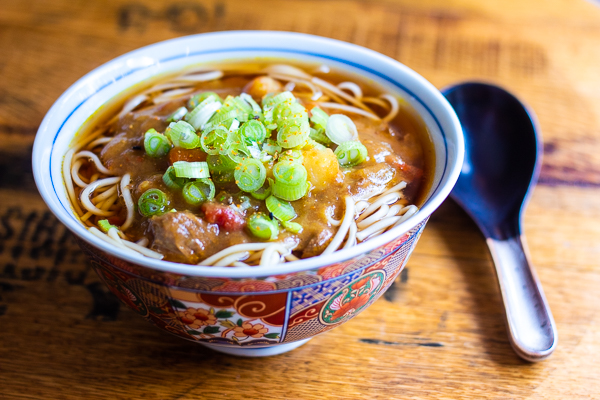
Pin it for later!
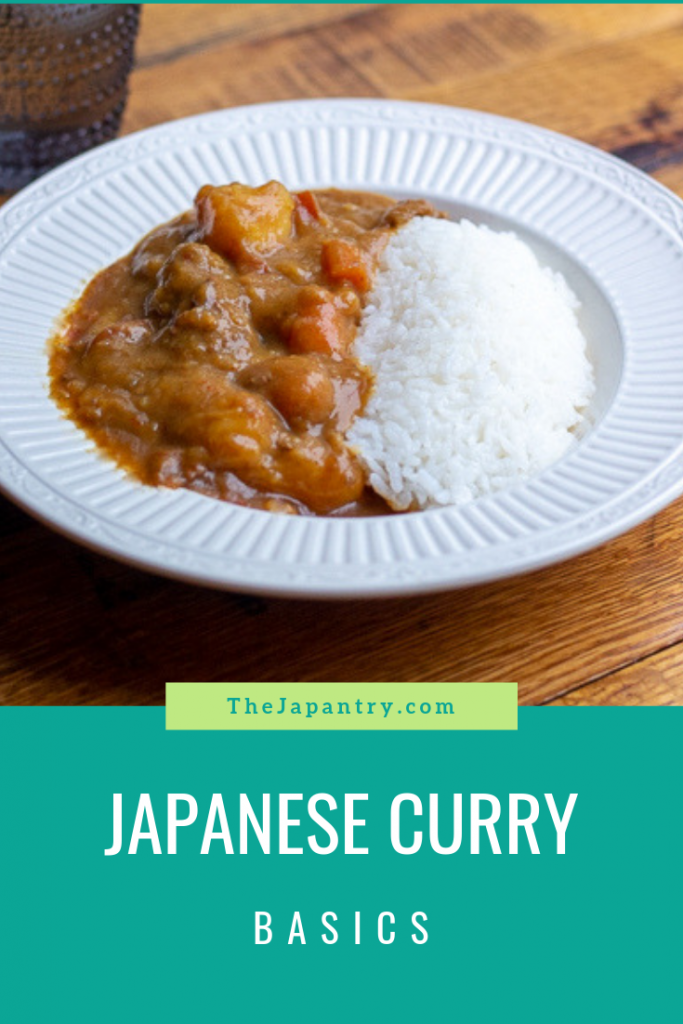
Related Posts
Japanese Gyudon Beef Bowl
Japanese Gyudon (pronounced gew-don) is one of the most basic yet the most satisfying…
July 29, 2019Japanese Curry Udon
Curry udon noodle soup is a uniquely Japanese dish. Udon are the thick wheat…
July 16, 2019


Leave A Comment